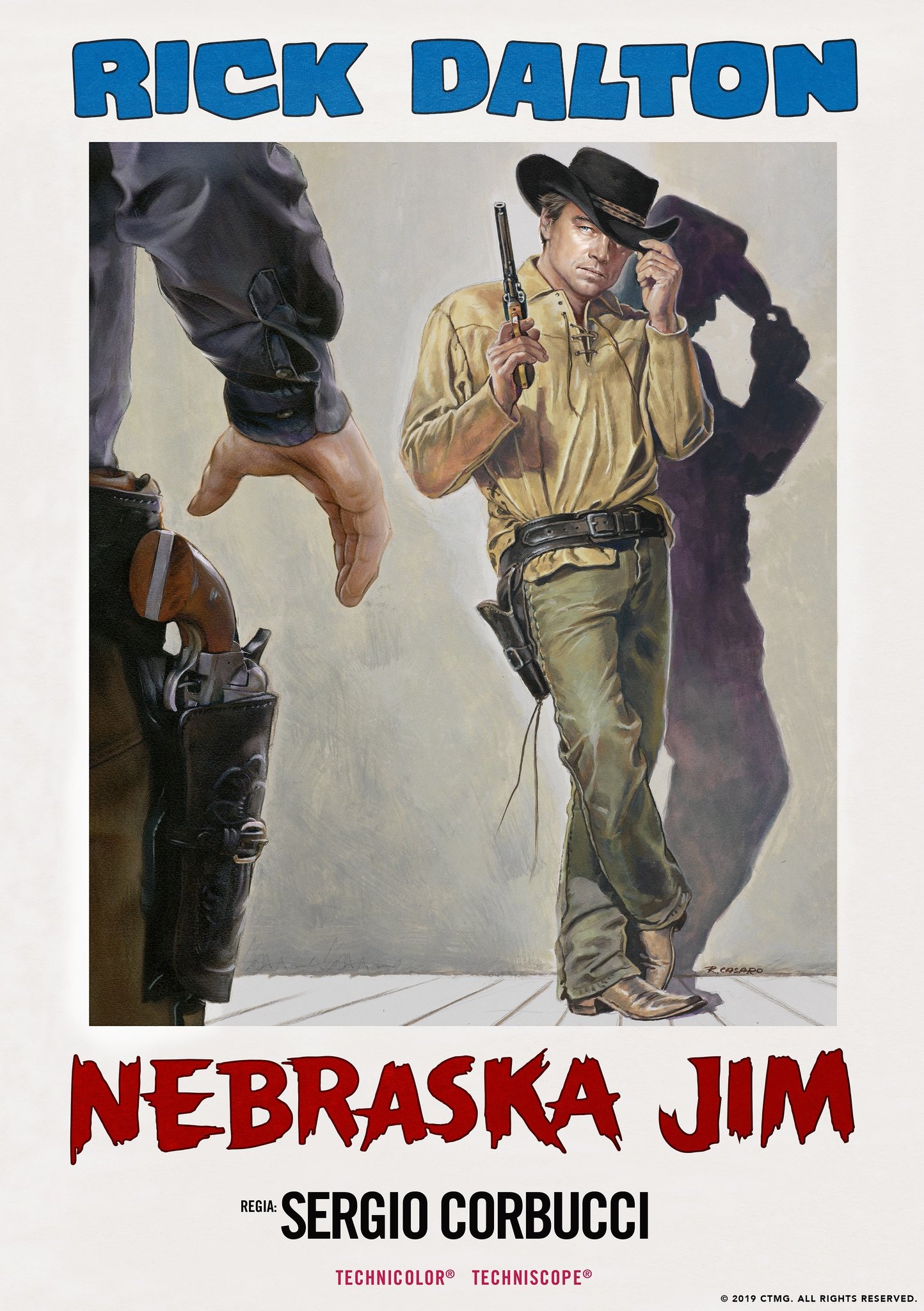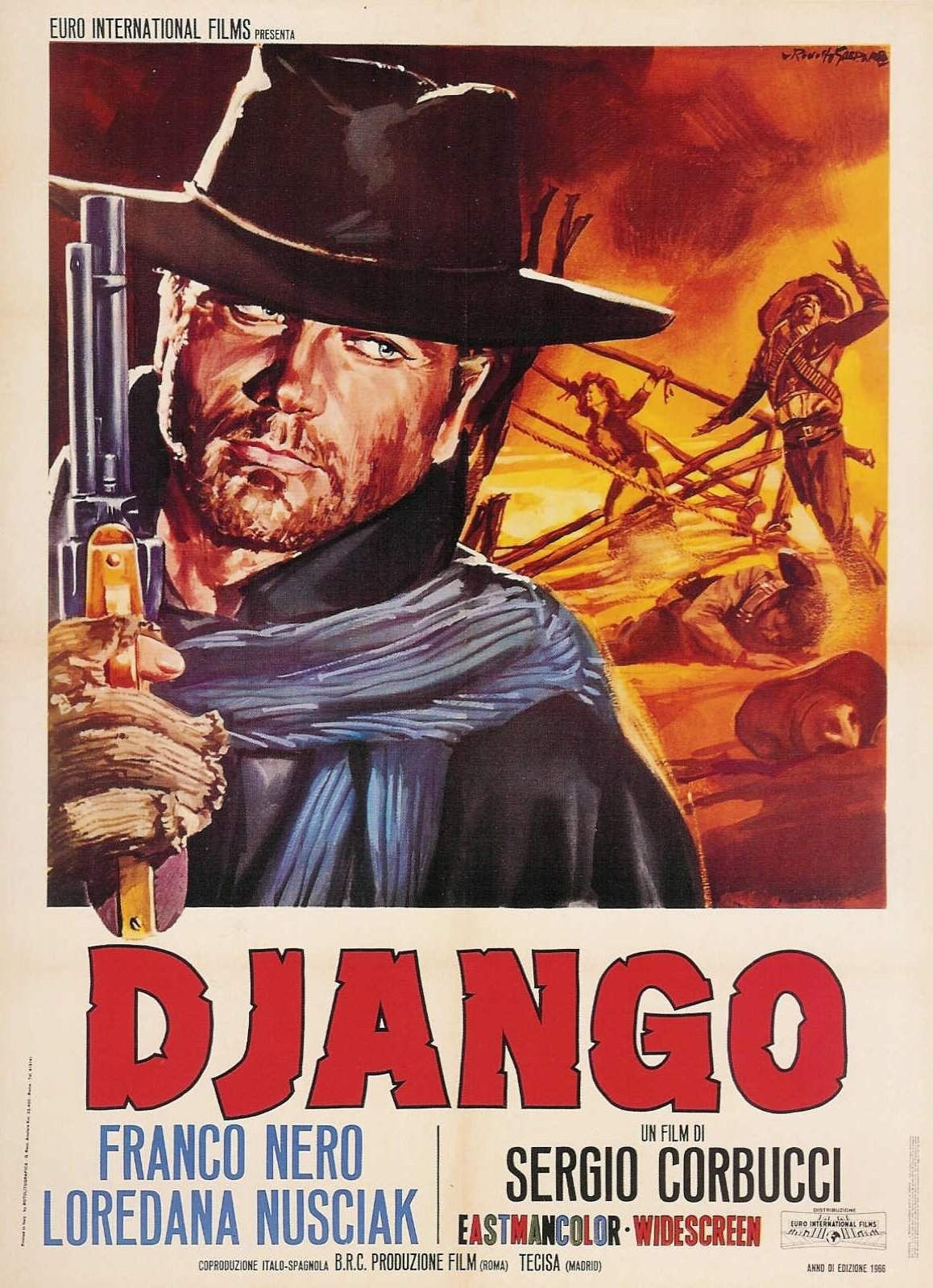Quentin Tarantino likes Italian movies. This is not much of a revelation if you’ve seen roughly six of the nine films he’s made. He’s a filmmaker who wears his influences as a badge of honor. Over the course of the past 15 years, Tarantino has brought in more and more elements from Italian movies, particularly Italian genre moviesOpens in a new tab. From Kill Bill onward, Tarantino has used music from Italian Westerns and crime movies—usually from Ennio Morricone or Luis Bacalov—but the movies have gotten more and more Italian in the past 10 years, during QT’s period movies. He’s paid homage to very specific Italian directors, and even name checks a few key players in Once Upon a Time…in HollywoodOpens in a new tab.
Very minor spoilers for Once Upon a Time…in Hollywood below.

Inglourious Basterds is a nominal remake of the Italian WWII action romp Inglorious Bastards directed by Enzo G. Castellari. That original movie—an attempt to ape The Dirty Dozen and other Nazi-killing war flicks—had a group of disgraced Allied soldiers out to blow up a train. Castellari directed a ton of action movies and westerns in late-’60s and ’70s before transitioning into post-apocalyptic Escape from New York and Mad Max rip-offs in the ’80s. Castellari was name checked in Basterds; the fake name Brad Pitt gives when pretending to be Italian is Enzo Girolami, Castellari’s real name, and the director himself appears as a Nazi cinema-goer during the film’s explosive climax.

In Once Upon a Time…in Hollywood, Rick Dalton (Leonardo DiCaprio) goes to Italy and Spain to appear in Spaghetti WesternsOpens in a new tab (he speaks derisively about the subgenre earlier on). The first one he does is called Nebraska Jim, directed by Sergio Corbucci. Corbucci is a real director who is indeed, as Al Pacino’s character says, the second best Spaghetti Western director. He directed Minnesota Clay in 1964 starring Cameron Mitchell, and Navajo Joe in 1966 starring Burt Reynolds; it’s not hard to imagine he’d have made a third similarly named movie in 1969 starring Rick Dalton.

Corbucci’s most famous film is his 1966 classicOpens in a new tab, Django, starring Franco Nero. Tarantino, of course, paid direct homage to this film with his own movie Django Unchained and used the first movie’s actual theme song as the theme song for his movie. Nero appears in Django Unchained as the owner of the losing slave during the first bare knuckle brawl. He asks Jamie Foxx what his name is, to which Foxx replies “Django. D-J-A-N-G-O. The ‘D’ is silent,” to which Nero simply says “I know.”

Another Corbucci classic is the 1968 movieOpens in a new tab The Great Silence which, unlike almost all Italian Westerns, takes place in the snowy mountains of Utah. It lends the film a distinct and foreboding look, perfect for the bleak story at hand. Tarantino sets portions of Django Unchained and all of The Hateful Eight in the snow. Samuel L. Jackson’s character in The Hateful Eight, Major Marquis Warren, is wearing a costume almost identical to the worn by Jean-Louis Trintignant as Silence in The Great Silence, right down to the flatter hat and grey scarf.

A final Corbucci reference in Once Upon a Time…in Hollywood comes when Sharon Tate (Margot Robbie) goes to the cinema to see herself in The Wrecking Crew. The theater has a movie poster for a western called The Mercenary. You guessed it, it was directed by Sergio Corbucci and co-starred Franco Nero and American actor Tony Musante, who, like Rick Dalton, went to Europe in the late-’60s to try to make a name for himself in movies.

The second Italian movie Rick Dalton makes has the rather silly title Kill Me Now, Ringo, Said the Gringo. Ringo is a kind of stock hero used in a metric ton of Italian Westerns. The trend first began with a pair of 1965 moviesOpens in a new tab starring Giulio Gemma from director Duccio Tessari. Those are A Pistol for Ringo and The Return of Ringo. Despite the name and the personnel involved, the two movies actually have nothing to do with each other and Gemma even plays a very different character in the second than he does the first. That repeated use of “Ringo” and the success of those pictures led to other directors naming their own lead characters Ringo in order to cash in. Sometimes the so-called Ringo wouldn’t even appear in the movie, even if the title had “Ringo” in it somewhere.

Kill Me Now, Ringo, Said the Gringo is said to be directed by Georgio Ferroni. Ferroni is not on many people’s list of great Spaghetti Western directors, but he did direct a series of successful-in-Europe Westerns starring none other than Ringo himself, Giulio Gemma. These included titles like Blood for a Silver Dollar (1964) and For a Few Extra Dollars (1965).
After that, Dalton is said to have made Red Blood Red Skin, a Western costarring Telly Savalas for Spanish director Joaquin Romero Marchent. Most Italian Westerns were actually shot in Spain, and most often in the Spanish desert town of Almeria. These movies were often co-productions between Italy, Spain, and West Germany, and they got either up-and-coming American actors or American actors on the wane of their career to star. As mentioned in Once Upon a Time…in Hollywood, these movies were shot without recorded sound and dubbed in later, which would allow for all the actors to speak their own language.

Back to Marchent, his Westerns included the lesser entries Seven Hours of Gunfire (1965), Dollars for a Fast Gun (1966), and I Don’t Forgive…I Kill (1968). He’s perhaps best known, though, for the supremely violent 1972 Western Cut-Throats Nine. That movie’s about a wagonload of prisoners headed across the Rocky Mountains who end up fighting the elements and each other for survival in the deep snow with a cavalry captain and a young woman. This, of course, is a major influence on Tarantino’s The Hateful Eight, in which eight nasty people are stranded in a haberdashery in the middle of snowy nowhere.

The final movie Dalton makes in Europe isn’t a Western. It’s a spy action movie called Operazione Dyn-O-Mite. Almost every movie about spies or military strategy or clandestine action has the word “Operazione” in its Italian title. Operazione Dyn-O-Mite is supposed to have been directed by Antonio Margheriti, who directed 57 movies in his five decade career. Margheriti is perhaps most famous for his Gothic horror movies like The Long Hair of Death and Castle of Blood. He also gets a name check in Inglourious Basterds as the alias for Eli Roth’s Bear Jew when at the big movie premiere. He really puts some sauce on “Marg-her-IIII-ti”.

And naturally the biggest influence, though much less overtly, is Sergio Leone. Corbucci is the second best director of Spaghetti Westerns because Leone is undoubtedly the firstOpens in a new tab. His movies were the most popular and are the reason 17 billion moreOpens in a new tab were produced in Europe afterward. Tarantino has often claimed The Good, The Bad, and The Ugly as his favorite movie and has used pieces of Morricone’s score for that in Kill Bill. The general vibe of his later movies feels very Leone as well. Where Leone would build tension through long, silent staring before a quick explosion of violence, Tarantino builds the tension with small talk, most evident in the bar sequence in Inglourious.

Leone’s fourth Western is Once Upon a Time in the West, released in the U.S. in July of 1969. Whereas his earlier Dollars trilogy was fun and raucous, Once Upon a Time in the West is a somber farewell to the American Western of Leone’s youth. Once Upon a Time…in Hollywood is not a coincidental title for Tarantino. After three full-on fantasy historical movies, he’s made a much more somber, slow creep toward the end of an era. Whereas West ends with the cowboys riding off into the sunset as a massive railway station is built, Hollywood is the end of the studio system as we knew it, and the beginning of the tumultuous ’70s.

Like Leone’s movie, Once Upon a Time…in Hollywood is both a very fictional movie and a love letter to a bygone age. And few things are as specifically bygone than Italians making their version of the fairy tales that were American Westerns.
Images: Sony, TWC, MGM, Titanus,
Kyle Anderson is the Editor at Large for Nerdist. You can find his film and TV reviews hereOpens in a new tab. Follow him on Twitter!Opens in a new tab